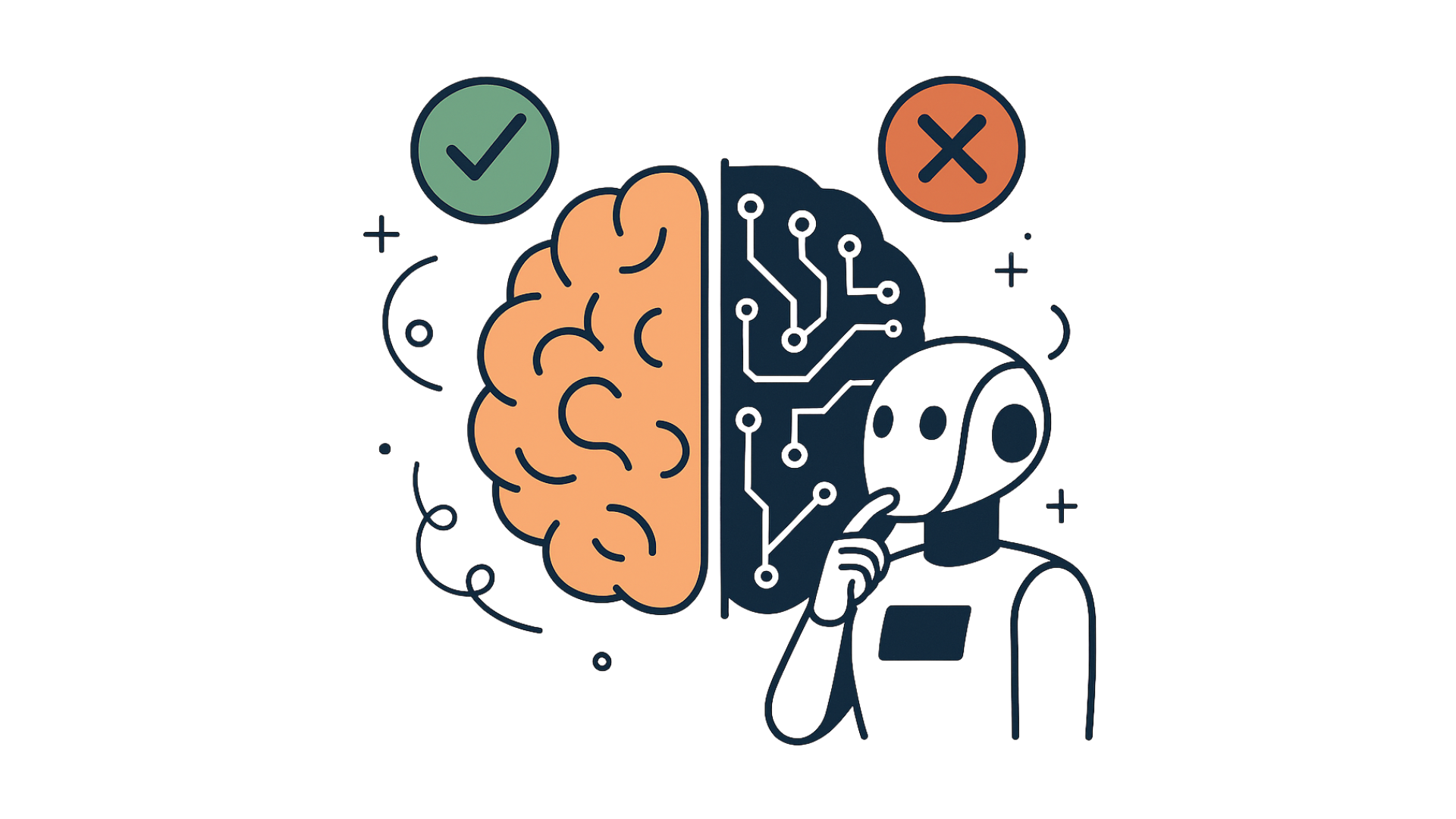The pitch is irresistible: AI that mirrors your top performers, only faster, cheaper, and always on. In meetings, the term ‘frontier models’ sparks excitement. Leaders picture copilots handling decisions and bots rewriting playbooks in seconds.
But when the proof moves from slide decks to real operations, the reality hits harder. Nearly 70-80% of AI initiatives miss the mark (PMI).
Most Large Language Models (LLMs) don’t fail at language. They fail at logic. In customer experience (CX), that’s dangerous. One missed step, one hallucinated insight, and suddenly, customer trust is on the line.
This blog goes past the hype. You’ll see where frontier AI is ready to deliver and where it still needs a safety net. Because knowing what AI can’t do is just as important as knowing what it can.
What Frontier Models Can Reason About
Frontier models, especially LLMs, can already outperform humans in specific reasoning tasks—if the environment is structured and the prompt is clear. Here’s where they shine today:
1. Language Understanding and Pattern Recognition
LLMs can digest and transform large volumes of text in seconds. You can rely on them for:
- Summarization: Turning long chats, emails, or tickets into clear, concise summaries.
- Rewriting: Adapting content for tone, audience, or channel.
- Pseudo-code generation: Translating instructions into logical, structured code-like output.
2. Multi-Step Reasoning in Structured Prompts
When you guide the model with precise instructions, it can solve layered problems.
For example:
- Explaining decision trees
- Mapping workflows across multiple conditions
- Calculating outcomes with dependencies
3. Tool-Augmented Intelligence
With access to external tools like search engines or memory, reasoning becomes sharper.
- Memory-enabled models can retain user preferences and past chats.
- Search-augmented models fetch up-to-date info to reason about current events.
- Action-oriented agents perform real-time tasks like booking, replying, or updating CRM fields.
4. Structured Environments like Ticketing Systems
Frontier models work best when rules are clear. That’s why:
- Ticket classification and routing are highly accurate.
- Form-filling and workflow automation succeed with predefined fields.
- Escalation logic is easy for the model to follow.
Put GenAI in a structured support setting, and the numbers speak: 14% more issues resolved per hour and 9% faster handling. It also slashes agent churn and manager escalations by 25%. (McKinsey)
But this success hinges on predictability. When the structure breaks or data lacks clarity, even advanced models struggle to reason through the noise.
Where Models Still Struggle
Despite their strengths, frontier models still stumble in areas where reasoning goes beyond patterns. These gaps matter when you’re scaling customer operations or relying on AI for strategic decisions.
1. Abstract Planning and Recursive Logic Often Break Down
Models like Anthropic’s Claude can handle simple tasks well. But when the goal requires steps that loop or evolve, results become erratic.
For example:
- Planning a multi-week CX campaign based on live data
- Handling “if-this-then-that” rules across multiple edge cases
The logic collapses because the model doesn’t truly understand recursion. It predicts rather than reasons.
2. Long-Term Memory and Context Continuity Remain Weak
Models often forget what happened five steps ago.
- A support agent bot might forget a customer’s issue mid-conversation.
- A productivity assistant may repeat steps or contradict earlier suggestions.
Even with memory plugins, consistency across long workflows is unreliable today.
3. Understanding Causality VS. Pattern is Still Missing
You’ll see outputs that look smart but lack reasoning.
Example:
- The model suggests refunds reduce churn but can’t explain why
- It correlates two events but fails to see what caused what
Without real-world understanding, models can’t tell if a result is meaningful or coincidental.
4. Rules, Policies, and Compliance are Easy to Ignore
AI doesn’t naturally follow business logic unless you constantly reinforce it.
- Data privacy steps might get skipped.
- Escalation rules may be overridden.
This creates a serious risk in regulated industries.
5. Overconfidence and Hallucinations are Still Common
Models often answer with confidence, even when wrong.
- Even safety-conscious models like Claude are not immune and may invent sources, processes, or features.
- The tone stays convincing, making it harder to catch errors.
Vectara reports that DeepSeek-R1, a reasoning model, hallucinates at a high 14.3%. That’s a sharp reminder: AI, no matter how advanced, isn’t foolproof.
Until models learn to say “I don’t know,” human review remains critical.
Core Insight: The Problem Isn’t Just the Model, It’s the System
| Model Alone | Model in a System |
| Forgets context | Retains memory & state |
| Hallucinates | Validated outputs |
| No controls | Escalation & fallback |
| Static output | Triggers actions/workflows |
You may think a smarter model means better outcomes. But in real-world deployment, that’s rarely the case.
Claude, GPT-4, and other frontier models are powerful, but raw power doesn’t equal real-world performance. A model without a system is like a brain without a body—intelligent but ineffective. What’s missing is structure.
Most failures aren’t about weak reasoning. They happen because the model operates in isolation.
- No memory: It forgets what happened minutes ago.
- No context: It lacks access to the rules, history, or priorities that matter.
- No control: It doesn’t know when to stop or escalate.
That’s why token-level brilliance doesn’t translate to system-level reliability.
You need scaffolding—everything around the model that turns intelligence into outcomes. This includes data pipelines, workflows, validations, and oversight. When these layers are missing, even the most advanced models produce erratic, unhelpful results.
A model is not the system. It’s only one piece of the equation.
To drive real value in customer support or employee experience, your AI must operate within guardrails. It needs the right memory, governance, and outcome tracking. Otherwise, it becomes a smart but directionless tool.
Without a strong foundation, intelligence has nowhere to go.
AI is only as strong as its structure
You don’t need the smartest model. You need the smartest system.
Models are evolving fast. But raw intelligence means little without direction, memory, and control. In customer support or employee workflows, it’s not the reasoning itself that drives value. It’s how that reasoning is applied, monitored, and improved over time.
At Kapture CX, we’ve taken a different path.
We don’t treat models as solutions. We treat them as components. The real power lies in the structured systems we build around them. Whether it’s resolving IT tickets or handling employee queries, our platform turns isolated AI reasoning into repeatable, auditable outcomes.
Our agentic architecture layers memory, context-awareness, business logic, and audit trails around LLMs. The result? AI that doesn’t just respond; it resolves. You gain clarity, consistency, and control across every touchpoint.
In the end, the competitive edge won’t come from who runs the latest model. It’ll come from who builds the most intelligent, reliable, and outcome-focused systems.
If you’re ready to operationalize reasoning at scale without the risk, Kapture CX is built for you.
Book your free demo now and see how structured AI turns reasoning into real results!
FAQs
No. They can support decisions with insights, but without context, rules, or oversight, their outputs remain suggestions, not reliable business actions.
A frontier model refers to cutting-edge AI like GPT-4 or Claude, trained on massive datasets to perform language-based reasoning at scale.
You must combine the model with system-level controls, like memory, fact-checking tools, and human-in-the-loop reviews, to avoid overconfident or false responses.













